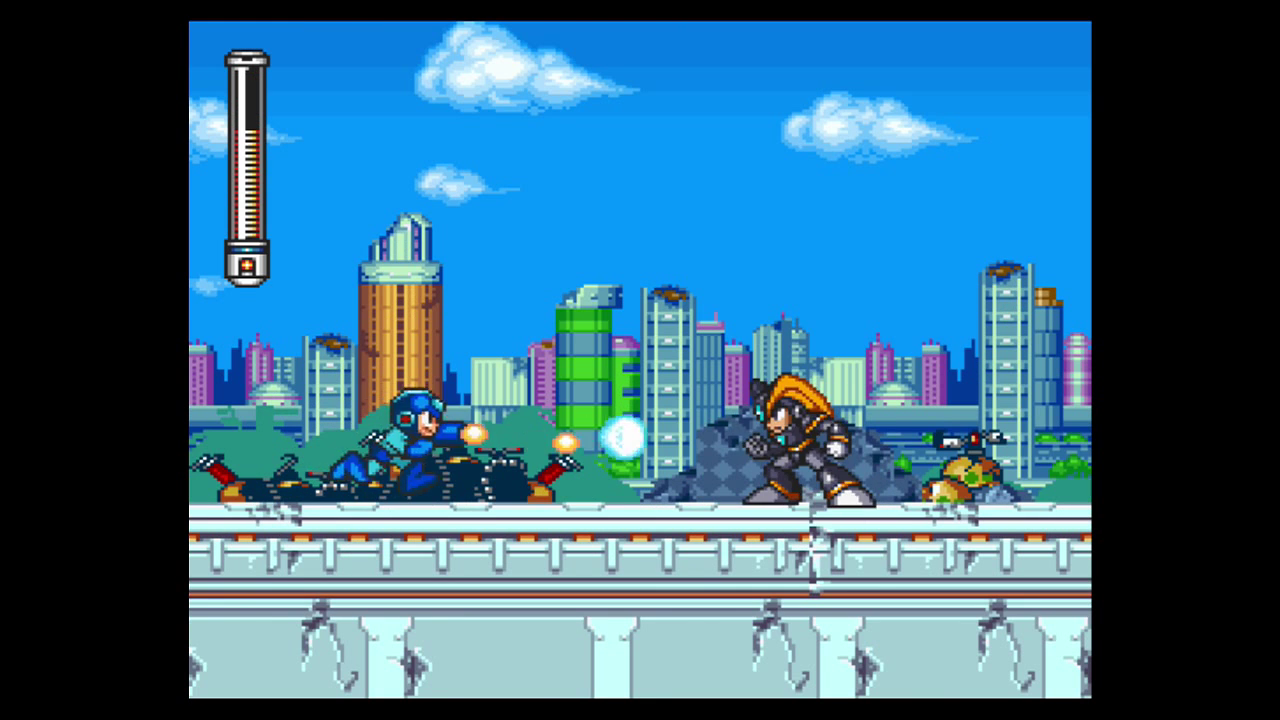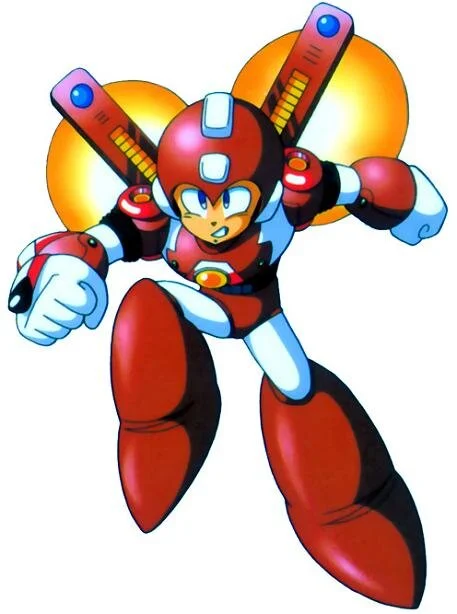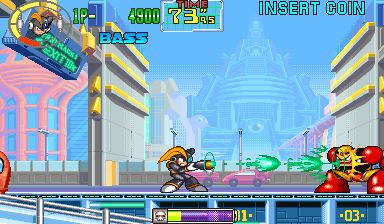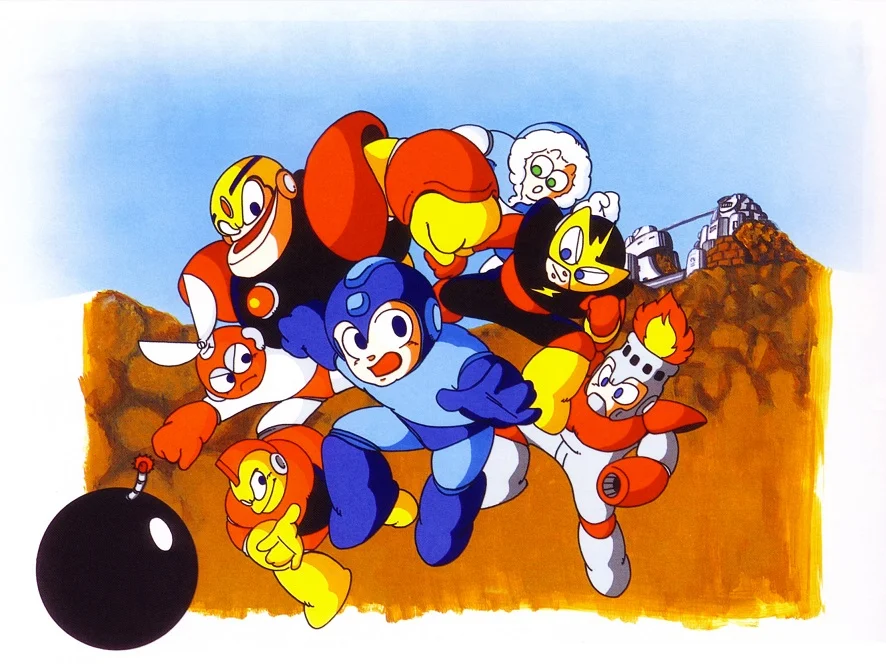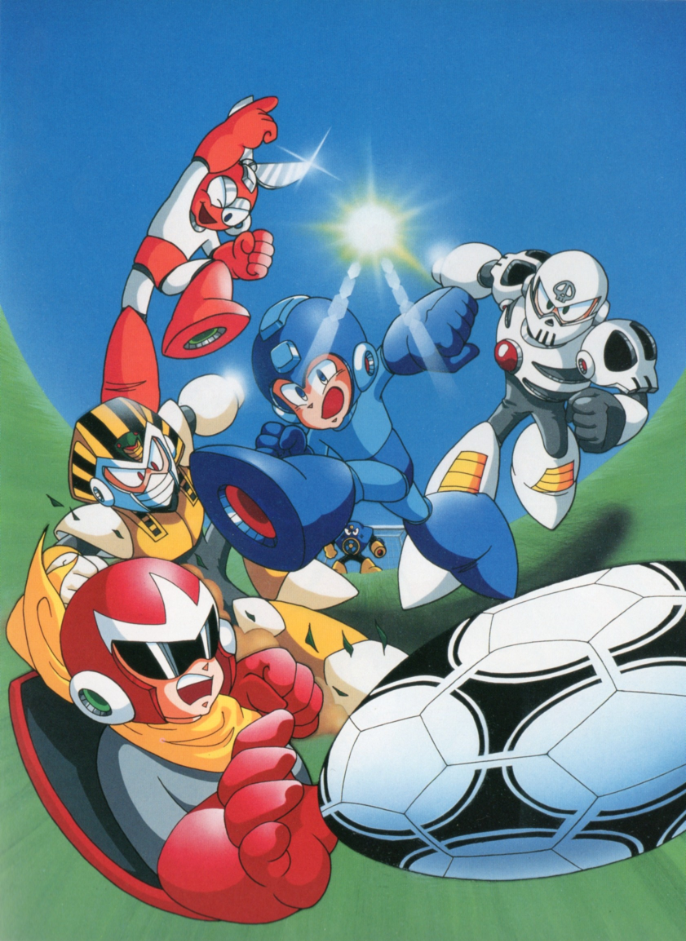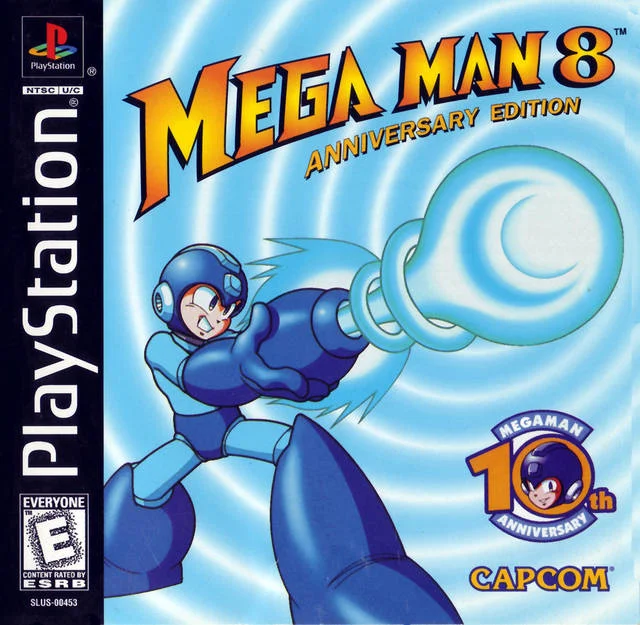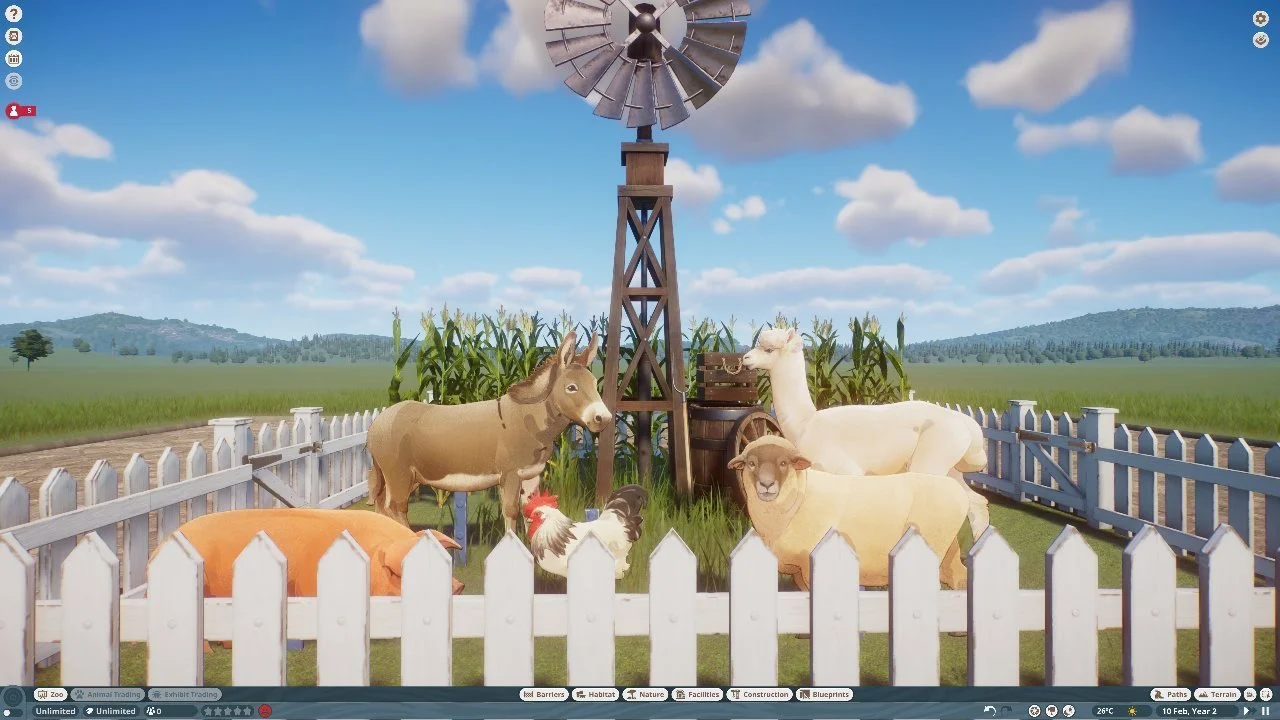Welcome to Part 7 of our series on the Mega Man Classic series! (For previous installments in this runthrough, be sure to check out the following links Part 1 Part 2 Part 3 Part 4 Part 5 Part 6
Today's installment brings us to the year of 1995, which brought us two classic series games: one for home consoles and one for arcades. Appropriately enough, we'll be covering Mega Man 7!
Mega Man 7 (Originally released Spring 1995)
North American box for Mega Man 7
6 months after being sent to prison (Mega Man 6), Dr. Wily's zero-hour contingency plan comes into play: several dormant robots escape, break Wily out of prison and wreak havoc on the city. Mega Man and his buddies, go into action to stop Wily, encountering the mysterious robot Bass (the musical term, not the fish!) along the way!
Mega Man 7 (Rockman 7: Showdown of Destiny! in Japan)went into development after the success of Mega Man X (the first Mega Man spin-off game). It was made simultaneously alongside Mega Man X2 by a b-team at Capcom, and released a few months later. The development cycle was a rushed and stressful 3 months, even less time than the Mega Man 2 team had. The game was made on a modified version of the Mega Man X(1 )engine.
First stage select screen in Mega Man 7
Mega Man 7 takes some cues from the Game Boy games in terms of progression: there's an intro stage, 4 Robot Masters that you can tackle in any order, an interstitial stage, 4 more Robot Masters that you fight in whatever order you choose and the final four stages are Dr. Wily's castle. Unless you partake in some password trickery, the game is somewhat non-linear, somewhat straightforward. Furthermore, Mega Man 7 is the first Mega Man console game to have a money system, this time in the form of Bolts rather than the P-chips of Rockman World 4 and 5. (The shop is entered by pressing Select on the stage select screen.) Much like Mega Man X, there is more of an emphasis on story to drive the game.
Mega Man battles Bass in the intro stage
Mega Man 7 would be the first original series Mega Man game where you can cycle through the Master Weapons using the shoulder buttons, an innovation borrowed from the X series. Perhaps the biggest overall contribution to the Classic series that Mega Man 7 brought was the introduction of Bass, Mega Man's rival, who would share his own spin-off game (Mega Man & Bass) and serve as a player character in Mega Man 10. On a lesser note, the game also introduced Auto (proprietor of the in-game shop) who is like a Scrappy-Doo of sorts to the rest of Mega Man's cast.
Auto’s shop
Much like Mega Man X, there is a Metroid-like emphasis on permanently expanding what the character can do through upgrades and hidden paths that are not immediately obvious to the player. But Mega Man 7 lacks the innovation of Mega Man X and the speed of Mega Man X2. Compared to the other original series Mega Man games, I'd say it's just as fun as any of the NES classics, but compared to the Mega Man spin-off games that proceeded it, in its day, Mega Man 7 might have come off to the general public as too little too late.
The Rush Adapters from Mega Man 6 have been streamlined into one package: the Super Megaman armor (found by collecting the RUSH Plates hidden in Freezeman, Cloudman, Brustman and Junkman's stages) which combines the wallop of a Rocket Punch with a dash-jump.
Mega Man’s Super Mega Man Armor in action!
To demonstrate the dichotomy between the Mega Man Classic series and the X series, Mega Man 7's graphics look like a bag full of colorful candy and there's plenty of springy and elastic googly-eyed robots abound. And yet, Mega Man 7's storyline is grimmer than some of the NES Classics: there's a foreboding tone to Wily's jailbreak, Mega Man is goaded into dueling Protoman, halfway through the game, Bass is revealed to be one of Wily's special robots and steals the Super Adapter upgrade for himself; destroying Dr. Light's Lab in the process. During the final confrontation with Wily, Mega Man contemplates killing Dr. Wily (although he doesn't follow through). In the end, Wily and Bass escape in a Blofeld-like fashion, Mega Man returns to his ruined home with a dour expression on his face while Wily Castle goes up in flames behind him.
Ending credits.
In the United States, Capcom USA chose to limit Mega Man 7's print run because of some financial difficulties they were having at the time; once it left store shelves, it was gone. With press limited to Nintendo Power and word-of-mouth, Mega Man 7 is one of those games that took was shaped largely the secondhand market and would become obscenely expensive like some other Capcom games of the time (like Demon's Crest, Mega Man X3 and Final Fight 3). Most people seem to like it, so long as you leave the Mega Man X baggage that overshadows the game at the carousel.
Despite the rushed production, Mega Man 7 has a certain polish to it. There's plenty to explore, gadgets to find and use and robots to battle. This is one of my favorites of the original series, I do a run at least once a year. I recommend it.
Mega Man 7 was included as part of the Mega Man Anniversary Collection. That port had a few problems: the graphics were blurred, there are some sound leveling issues (the music output is a bit too low) and Atomic Planet removed the ending due to some technical difficulties.
It was later ported to Wii U eShop after being absent from the Wii Virtual Console. It's a perfect port! The game is also available as part of Mega Man Legacy Collection 2.
Mega Man: The Power Battle
In fall of 1995, Mega Man: The Power Battle for CPS-2 arcade hardware rolled out into arcades. This is essentially a boss rush version of Mega Man with a Mega Man 7 inspired art style, with the platforming segments omitted entirely. Playing as Mega Man, Protoman, and/or Bass, you fight a buffet of bosses from Mega Man 1-7.
The game is fair , there aren't too many cheap shots and it's overall pretty easy, I run through the whole thing in less than 20 minutes. And even at that, the Mega Man Anniversary Collection versions give you infinite continues.
That's it for 1995! The next installment of this series will cover Mega Man's year of 1996!


